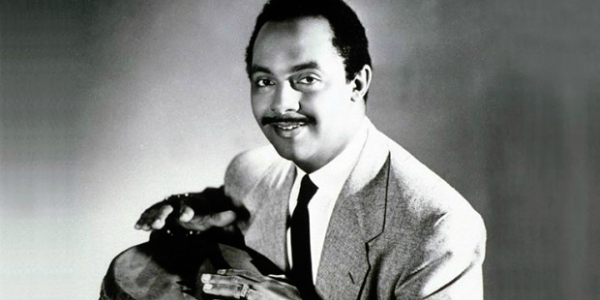Creado a finales de la década del 40 del siglo pasado por el maestro Dámaso Pérez Prado, el mambo es parte de la esencia de México y de innumerables películas del Cine de Oro nacional; sin embargo, el músico de origen cubano fue expulsado de México durante más de una década.
También conocido como Cara de foca, Pérez Prado nació un 11 de diciembre en la provincia de Matanzas, en el occidente de Cuba, en 1917. Llegó a México a finales de 1948, apenas con una maleta, debido a que sus arreglos no eran bien vistos entre quienes una década más tarde concretarían la revolución en su país de origen.
Acogido por Ninón Sevilla, el artista pudo concentrarse en su música,y fue así que entre 1949 y 1953 grabó algunos de sus mambos más famosos. “El respetable público lo consagró y lo disfrutó en el cine, el teatro, los discos y los salones de baile”, recuerda Iván Restrepo.
Durante una conferencia ofrecida en 2018 para recordar los 100 años del “Rey del Mambo”, explicó que Pérez Prado tenía muchos enemigos debido a su éxito; incluso, “al salir por vez primera de gira a EE. UU., algunas columnas de espectáculos lo despidieron para siempre augurando su fracaso”.
Aunque son variadas las versiones sobre su expulsión de México, el 6 de octubre de 1953, una de ellas refiere que el Cara de Foca se involucró con la mujer de un expresidente, pero la versión que se extendió por muchos años fue que intentó grabar el Himno Nacional de México a ritmo de mambo.
Nada de eso, dijo Restrepo: “fue la venganza de un empresario que lo contrató para el teatro Margo, molesto porque aceptó un contrato con otro hombre de negocios que le pagaba mejor. Para vengarse, contó con la ayuda de funcionarios de Migración”.
Así, en la grabación del último número musical de la película Cantando nace el amor, dos agentes de Migración le pidieron su permiso de trabajo. Como no lo tenía, les ofreció 600 pesos para que lo dejaran siquiera terminar la grabación del mambo Alekumsalem en la RCA.
“Salió rumbo a La Habana, luego se dirigió a EE. UU., en donde inició una nueva etapa en su carrera musical. Su versión en inglés de Cerezo rosa estuvo por meses en el hit parade, animó bailes en un reconocido hotel de Nueva York y trabajó con grandes voces femeninas como Rosemary Clooney”.
Restrepo también compartió que fue durante una comida en la casa de María Victoria, cuando la actriz y cantante le solicitó al entonces presidente Adolfo López Mateos que le abriera de nuevo las puertas de México a Pérez Prado.
“María Victoria le dijo al entonces presidente que su expulsión había sido una injusticia, pues su único delito era haber hecho feliz a millones de mexicanos y latinoamericanos, y que el compositor tenía años deseando regresar a México”.
Como por arte de magia, todos los delitos que le habían sido atribuidos desaparecieron, por lo que el 31 de agosto de 1964 fue autorizado a regresar a México, incluso con un contrato del empresario que había maquinado su expulsión.
Tras una larga enfermedad, Dámaso Pérez Prado falleció el 14 de septiembre de 1989 en la ciudad de México, a los 73 años de edad, dejando tras de sí un gran legado musical que nunca dejará de sonar: ¡Maaambo!
Te puede interesar: La Furia de Clyo


